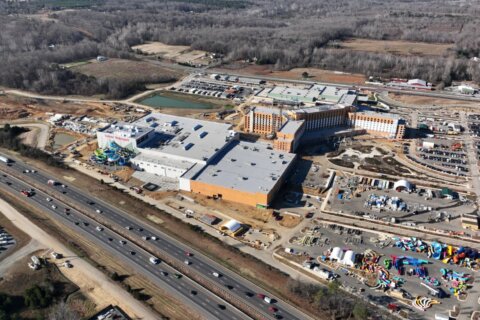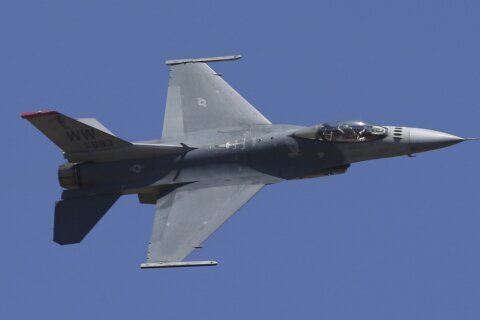This video is no longer available.
As planners in the mid-1950s envisioned the construction of a 41,000-mile national system of interstate highways, the Capital Beltway was already in the works — even though it was called the Washington Circumferential Highway at the time.
The goal was simple: provide passenger vehicles and trucks with a convenient and nonstop way to bypass driving through downtown D.C.
Saturday marks the 60th anniversary of the completion of the Capital Beltway, when the final stretch of the highway opened to traffic, on Aug. 17, 1964.
In the past six decades, the Beltway has been widened several times, become a well-known political reference, been supplemented with high occupancy toll lanes and become synonymous with congested commutes in and around the nation’s capital.
The first segment opened in 1957 — the 1.6-mile stretch between Maryland 355/Wisconsin Avenue and Connecticut Avenue, in Montgomery County, Maryland, according to the Capitol Beltway History blog.
Four years later, the first segment in Virginia opened — a 6.1-mile stretch between Interstate 95/Shirley Highway and U.S. Route 50/Arlington Boulevard.
The final stretch to open was the top of the Beltway. The 24-mile highway between Route 355 in Montgomery County and Route 4/Pennsylvania Avenue in Prince George’s County marked the completion of the 64-mile loop around the District.
On Aug. 17, 1964, Maryland Gov. J. Millard Tawes cut the ribbon in a ceremony near the New Hampshire Avenue interchange.
The day before the ribbon cutting, The Washington Post reported the Beltway would be more than just a way for motorists to save a few minutes of travel time. “Instead, it is a major factor in reshaping the social, residential and economic pattern of the Washington area. It is making neighbors of strangers.”
And rather than being the Washington area’s new “Main Street,” the Post characterized the Beltway as “a contemporary version of a crosstown boulevard, joining suburban areas that have more in common with each other than they ever suspected. Yet the Beltway travel pattern is a random one. Nobody will want to go simply from one point on the Beltway to another. Every trip will start at some distance from the Beltway, will use it for two miles or 20, then will get off to reach the driver’s destination.”
As the region has continued to grow, leaders in Maryland and Virginia have had differences at times over changes that should be made to improve commutes on the Capital Beltway. The Woodrow Wilson Bridge and American Legion Bridge are the two bridges along the Beltway that span the Potomac River.
Earlier this year, a federal judge dismissed a lawsuit filed by a coalition of environmental and preservation groups seeking to block a proposed expansion of the Capital Beltway and Interstate 270.
Historians and urban planners have tracked and analyzed the importance of the Beltway in aspects of living, ranging from mass transit, agriculture, culture, and outdoor recreation.
Get breaking news and daily headlines delivered to your email inbox by signing up here.
© 2024 WTOP. All Rights Reserved. This website is not intended for users located within the European Economic Area.








